Editor's Note: Today we're joined by David White, Director of Content Marketing at connective3. David shares his PAGES magazine article which discusses the various ways you can leverage social media to benefit digital PR and link acquisition.
Take it away David!
On the 11th of January 2018, the world of social media marketing changed forever, causing a headache for social media experts and an even bigger problem for content marketers. Let me explain:
Mark Zuckerberg, CEO and founder of Facebook, made an announcement which sent shivers down the spines of marketers worldwide.
The announcement detailed a change to the algorithm Facebook uses when prioritizing posts on a user’s news feed. Put simply, the changes made meant that Facebook now prioritizes posts from friends and family, ultimately meaning that branded content needs to work harder in order to get the same screen time.
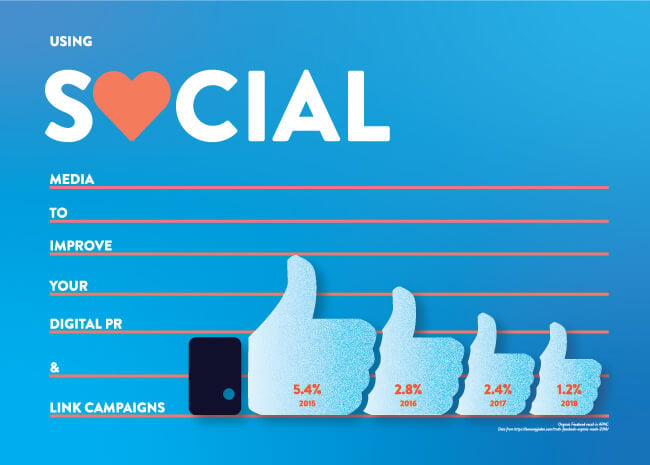
To put this into numbers, recent studies show that Facebook organic reach has fallen by more than 50% from 2015–2018.

This update caused unprecedented damage to many brands’ social strategies, but what is often overlooked is how this update impacted news publishers, and subsequently content marketers.
News publications such as national and regional papers rely heavily on Facebook to deliver traffic to their site (the more traffic, the more advertising!).
With the new algorithm, many media outlets saw huge decreases in that traffic. To take this one step further, journalists working in the newsrooms of those publications are now often targeted on the traffic their articles deliver.
With Facebook no longer delivering the same amount of traffic, journalists are now looking to other channels such as Apple News and Samsung Upday to deliver the traffic lost through Facebook.
According to mac rumours, Vox.com can get up to 50% of their daily traffic from Apple News alone.
Content marketers need journalists for links and coverage. If you create a story that will help the journalists achieve their KPIs, you are far more likely to get the links and coverage you desire.
The question is, how do we understand what content works well on different channels? After all, once we have answered that, we can tailor our digital PR campaigns to give them the best chance of going viral and help exceed journalists’ traffic KPIs.
Firstly, we need to understand that social is much bigger than just Facebook, Pinterest, Instagram, Twitter and LinkedIn.
There are hundreds of engaged social platforms that have relevant traffic waiting to be taken. A great place to start before thinking of a campaign is conversationprism.com.
The conversation prism was launched in 2008 by Brian Solis and shows a visual map of the social media landscape.
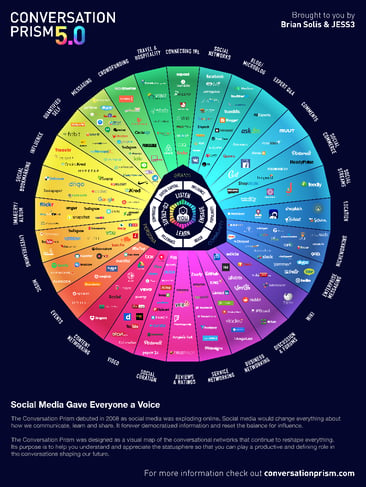
The prism reveals numerous social platforms, all of which hold a highly-engaged audience. It’s our job as content marketers to understand which channels our audience visits, and then work out the best way to present content to them on their preferred channel. This is why in 2019 social listening is more important than ever for content marketers.
How to use social listening for content marketing
Social listening allows you to input a brand, a topic, or a social handle and see how people are engaging with that term or profile over social media, editorial, forums, YouTube, and online reviews.
Social listening offers you detailed information on what your audience is talking about and who they are engaging with. It can also show you the best content per platform.
For example, If I were to target the travel conversation on Reddit, I would need to know what content is most likely to get picked up and shared. Knowing this means I can tailor my campaign and then sell it into the press with the hope that their article also receives traffic from channels such as Reddit.
The first step any content marketer should take is to understand how to visualise their content. A great tool to work this out is Buzzsumo.
Buzzsumo allows you to input any keyword in any language and see what content has been written about that topic, broken down by social shares and backlinks.
For the sake of this article, imagine we are a travel brand in the UK selling holidays. Buzzsumo allows you to input the term “holiday” into their search bar, which then reveals what articles have been written about that topic over the past 2-5 years.
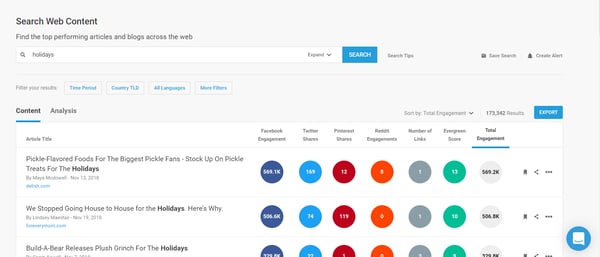
By following these next steps, we can see how best to visualize our content:
- Export all articles into an excel sheet. The data exported will show the URLs, the number of shares per social channel, the number of links that article gained, and how the article was visualized.
- Remove all the articles that gained zero links (as we don’t want to learn from content that didn’t perform).
- Create a pivot table.
- Filter for the content visualization and compare against number of links before visualizing in a chart.
What you should get is data such as shown below:
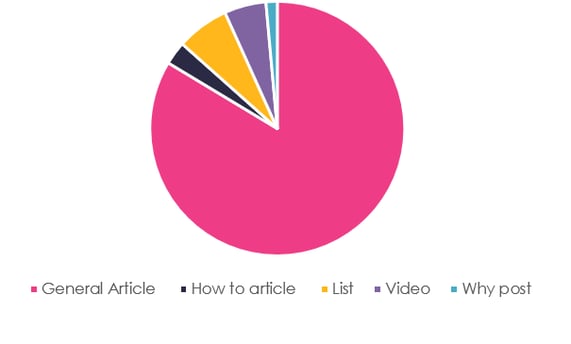
This shows that videos and “why” posts get the least amount of links. List features do OK and general articles (surveys, promotions, and write ups) do the best.
This is a great starting point and a perfect example of how to use social media to better your digital PR. The issue is, this is only half of the story. No matter how you visualize a campaign, it won’t work if the idea you’re writing about doesn’t resonate with people.
You need to find conversations that your target audience is having and, if relevant, create content around those topics.
Social listening is a great way to work out what these conversations are.
For the sake of this article, I will be showing you how to do this with the social listening tool Linkfluence, however, I first want to share other tools you can use (these are just some I have used previously; others are available):
o Pros: Great data visualisation and a huge data set to play with
o Cons: Expensive
o Pros: This is a cheaper alternative and is very user friendly
o Cons: You can’t get granular geographic data
o Pros: Free tool and really easy to use
o Cons: Data is not as in depth as other tools
Using social listening to find the likes and dislikes of your followers
Linkfluence, like many other tools, offers you a wealth of data when trying to understand the likes and dislikes of your audience. In particular, you can use the tool to find out the topics your audience engages with (and use this as inspiration for your PR ideas).
The first thing social listening can show you is the accounts and conversations your social following are having. You can see this visualized below (I have removed the account details).

The image above shows how you can work out what conversations and personalities your audience engages with. For the above, you may want to consider running an X Factor campaign as you know there is interest in this topic.
Social listening can also help you understand what conversations are happening over different channels (Reddit, forums, websites, etc.).
I input the term “family holiday” and “weekend break” into Linkfluence and asked for it to show me the surrounding conversations that are being talked about through online media:

The above diagram shows the surrounding topics, again offering a chance to create inspiration for the next PR campaign idea.
Improving outreach via social listening
My final point on using social media to better your digital PR pertains to outreach.
Outreach, or media relations, is when we sell our idea into the media with the hope that they cover our campaign.
A great way to tailor your outreach strategy is to make sure you are targeting journalists who have a similar interest too, or have recently talked about the subject of your PR campaign.
By analyzing journalists’ social profiles, we can search Twitter to see which press contacts have recently tweeted about a subject that is related to or is close to our PR campaign (ultimately meaning they might be more inclined to cover your story).
A great tool to do this at bulk and with ease is anewstip.
Anewstip allows you to input keywords and find journalists who have tweeted about that subject.
You can break down the search criteria by time, language, and topic.
For example, if I had a campaign or data surrounding Black Friday, I could input the term “Black Friday” into the search function and see which journalists are currently engaging with that topic. I could then go find their details and approach them.
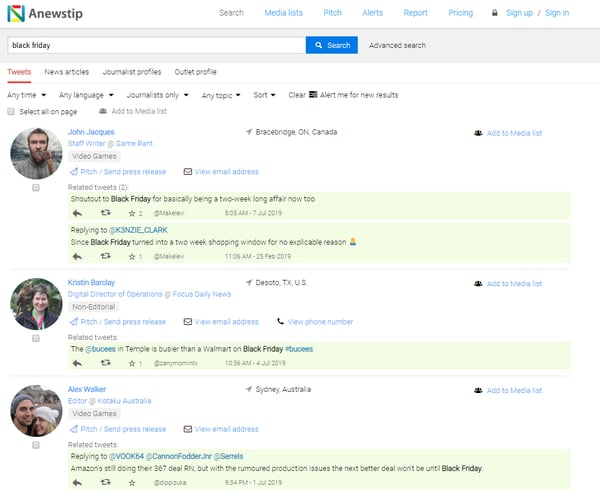
Using this bespoke and personal approach means that we are much more likely to land the coverage and links we require.
Summary
Newsroom cuts, fake news, and changes to the media landscape are now having a huge impact on digital PR and link building activity.
Social media and digital PR should no longer work as two separate channels. When they work together, they can improve the results and output from both sets of activity, whilst tackling the above-mentioned challenges.
Using social media means that digital PRs can improve their results and deliver campaigns they know are going to resonate with potential customers.

